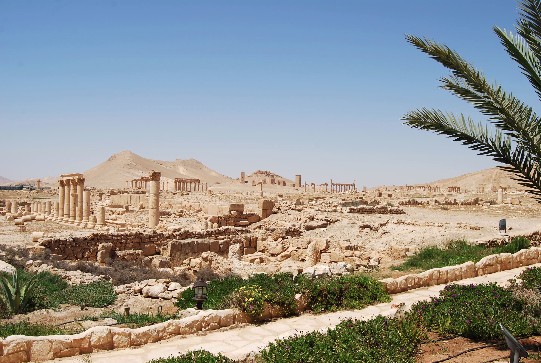
Syrian Economics & Terrorism
Since 2000, when Bashar Assad entered into office as the president of Syria, Syria’s national GDP steadily climbed upwards. How is it then that as a country’s wealth exploded due to this very regime, so many people took to the streets against it in the 2011 protests? If we can learn from this revolution and the dangerous extremist outcomes, we may be able to better anticipate future terrorist threats to America.
Many of the grievances leading to the Syrian revolution related to a series of Assad’s reforms, supposedly aimed at fostering private ownership and economic activity. To compensate for austerity measures, the government required private companies to move their employees from temporary to permanent statuses, forcing them to take on the worker’s benefits. As many companies could not afford to pay the workers full time and pay for benefits, this policy led to massive layoffs– around 500,000 people or 10% of the total workforce was surplus labor. Unemployment was one of the biggest issues in the Syrian economy.
While Assad cut social programs and privatized large sectors of the economy, his cousin Rami Makhlouf used the situation to his advantage, buying up real estate, banking, free trade zones, duty-free shops, and luxury department stores. He also owns Syriatel, the largest mobile phone company in Syria. By 2010 he controlled as much as 60% of the Syrian economy. It is this type of corruption in both the state legal system and the economy that strangled economic diversity and created massive inequality.
With the people being both politically and economically oppressed, organizations such as Jama’at Zayd began to step in to the social welfare roles previously filled by the government. Their charity work led to an increase in their presence in the region, with 30 mosques throughout the region. This is significant because the Jama’at Zayd organization was not sympathetic to Assad’s regime, and yet was able to gain power.
Although Jama’at Zayd is not a terrorist organization, many different groups gain power in response to government disenfranchise of the people’s political voice. When the government is politically unresponsive to a portion of the population, it is a contributing factor to terrorism. When there is inequality in economic, social, or political representation, and the government fails to respond positively to non-violent techniques, people may choose to turn to terrorism as an alternative method.
Considering this, it is important to understand that there is little evidence linking poverty and terrorism. Countries with lowest GDP levels are not connected to a rise in terrorist groups, and even in countries where these groups are active, poverty levels have little to no correlation with the number of terrorist attacks or terrorism recruitment. Rather, places with high levels of inequality have substantive correlations to terrorism. Social, political, and economic inequalities tend to be intertwined. Al Qaeda and other violent extremists deliberately exploit conditions of inequality, often recruiting from slums, offering jobs and social services to those desperately in need.
This is something that is not sufficiently considered in security and development policy today. The US aid that goes to fighting terrorism in these countries is often geared towards military and intelligence cooperation, not towards long-term plans to dissuade youths from joining extremist groups. While moving forward, the US should pay particular attention to economic, social, and political inequality as a factor that can be used to predict the likelihood of future terror attacks.





